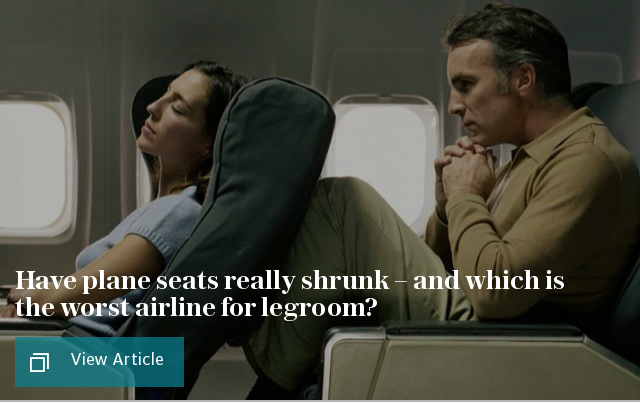Ludicrously small toilets – coming soon to a plane near you

Airline passengers may be getting larger, but the onboard toilets are getting smaller as the industry looks at ways of packing in even more fare-paying passengers.
The latest squeeze comes against a backdrop of carriers cutting legroom and making seats narrower.
According to the industry, the incredible shrinking lavatory is making it possible for airlines to cut fares, and both Boeing and Airbus are bowing to demands from airlines to make onboard toilets more compact.
In the US, the newest Boeing 737 aircraft flown by American, Delta and United, feature cubicles just 24 inches wide – down from the 34 inches offered previously.
In Europe, Ryanair and Norwegian have each ordered more than 100 of these 737 MAXs.
But complaints have been flooding in from passengers struggling to use the cramped facilities, many of whom have posted photographs on Twitter and Instagram.
In particular, the sinks are said to be so small that it is impossible to wash both hands at the same time. The rear of the plane, meanwhile, is so cramped that when the doors of the two hindmost loos are opened, cabin crew are sealed off in the galley and unable to reach passengers.

“If I don’t duck, I hit my head on the door. I can’t stand up completely, so I have to twist myself into a pretzel to use the facility,” Barry Brandes, a US traveller, told the New York Times.
Zach Honig from the website ThePointsGuy.com posted a photo taken on board a new United 737. He compared the loo to a “vertical luggage storage compartment.”
A post shared by @ZachHonig (@zachhonig) on Jun 7, 2018 at 11:10am PDT
“The Ryanair 737 MAX [the first of which will be delivered next year] will set the gold standard for the industry,” said Bob Mann, a New York-based aviation consultant.
“The mould has been set with investors’ desire for densification and this is the industry’s response.
“I am six feet four inches and I have to lean back to avoid hitting my head. The issue we have to deal with is the conveniences are getting smaller as people get bigger.”
In Britain the average male now weighs 13st 3lbs, is five feet 10 inches tall and has a 37-inch waist. In 1967, he weighed 11st 8lbs, was 5 ft 7.5 inches tall and had a 34-inch waist.
The figures in the US are equally dramatic. An average woman weighed 140 pounds in 1960; but shot up to 169 pounds by 2014, according to the Centers for Disease Control and Prevention. The average man went from 166 pounds to 196.
A post shared by Robert Hudson (@roboskillz) on Nov 16, 2018 at 10:05pm PST
Given the commercial pressures faced by airlines to maximise revenue, this is setting a challenge for manufacturers.
“Airlines are trying to make better use of cabin space. At the back of the aircraft, there is space which is never used,” an Airbus spokesman said.
“Cabin configurators are trying to use that space more efficiently, freeing it up for the galley or more seats. They are pushing the sink back into a curved part of the cabin which was never used.”
The 737-800 has a maximum capacity of 189. But its replacement, the 737 MAX 8, is certified to carry up to 210 fliers. Smaller toilets, along with slimline “Zodiac” seats, helped Boeing find room for 21 more seats. American Airlines has said the new loos could help it save $500m over the next three years.
In some cases, however, the additional space is used to provide a toilet suitable for wheelchair users.

Rockwell Collins, one of the companies specialising in designing onboard lavatories, has come up with a design it calls the “Advanced Spacewall.”
It is a design which, the company says, provides up to seven inches of cabin space.
Another company, Smart-Lav, has designed a toilet for the Airbus which makes it possible to squeeze in up to six additional seats.

British Airways is among the airlines which is reconfiguring its cabins on the 35 new short-haul Airbus aircraft it will be receiving over the next five years.
“We have changed the shape of toilets on our new Airbuses, but mainly to make them wider and more suitable for customers with reduced mobility – essentially one has become wider and one shorter,” a spokesman said.
But some experts, such as John Quelch, dean of the Miami Business School, remain cynical.
“Low-cost airlines that provide no free food or beverages have often contemplated removing a rear toilet in a 737 to add three seats,” he said.
“Passengers don’t need or don’t deserve to go as often on a low-cost carrier. Carriers don’t want to make going to the toilet a comfortable experience. They don’t want people lingering.”

